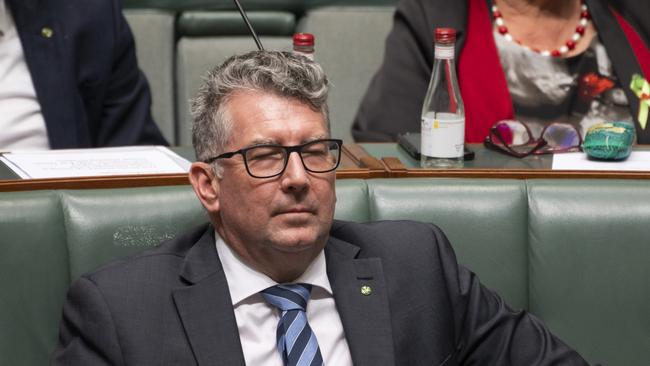Plea to Keith Pitt to ‘pull the trigger’ on gas exports
The Resources Minister has been formally asked to consider capping gas exports by a major union.

Resources Minister Keith Pitt has been formally asked to consider capping gas exports by a major union and a leading industry group, with claims the nation’s manufacturing comeback was “in danger of being jeopardised by high gas prices”.
In a joint letter to Mr Pitt, Australian Workers Union national secretary Daniel Walton and Australian Industry Group chief executive Innes Willox wrote that the spike in gas prices this year was “creating a real risk there will be a domestic shortfall in gas availability for our critical manufacturing industries”.
They asked Mr Pitt to consider “pulling the trigger” on the Australian Domestic Gas Security Mechanism, which limits producers from exporting when there is a shortfall in local supply.
“It is clear that other efforts (such as the code of conduct between gas users and exporters) cannot overcome the outsized impact of prices and demand from Asia in our export-dominated market,” the letter says.
“Australia is the world’s largest exporter of LNG and has abundant reserves of gas. It is untenable that our domestic businesses are priced out of accessing this critical resource.”
The Weekend Australian revealed that Anthony Albanese had thrown Labor’s support behind invoking the ADGSM, declaring that Australian jobs should be “put first” as the nation tried to pull through the pandemic.
Wholesale spot prices in Victoria have receded after soaring to $58 a gigajoule on Friday but remain more than triple normal levels at $25GJ in Sydney and $18GJ in Melbourne on Sunday.
In a further blow to the government’s plan for a gas-led recovery from Covid-19, competition tsar Rod Sims poured cold water on the prospect of gas ever again being available to Australian manufacturers for $4GJ.
Former Dow Chemical boss Andrew Liveris urged the government to intervene in the energy market to support a $4GJ price as head of the National Covid Co-ordination Commission’s manufacturing taskforce.
But Mr Sims, the chair of the Australian Competition & Consumer Commission, said it was “pretty hard to see how you can get back to $4(GJ)” given the high-volume of LNG exports to Asia.
“We had $4 gas before the major LNG players came along because you had more supply of gas in Australian than you had demand,” Mr Sims said.
“When you had the LNG players, that immediately meant the price on the east coast was going to have to be the international price, unless you found a hell of a lot more gas.”
Mr Pitt said the spike in prices was “due to several specific factors that are not expected to undermine the government’s plans for a gas-fired recovery”.
“The government is working to ensure gas prices remain competitive by unlocking supply, delivering an efficient pipeline and transportation market, and empowering gas customers,” he said.
Gas producers told The Australian that no additional gas could be physically supplied to manufacturers from the big Queensland LNG plants even if the domestic gas mechanism was triggered.
Gas flows from the Queensland hub of Wallumbilla to South Australia’s Moomba hit maximum capacity on Saturday.
Local gas generators have boosted their consumption in response to the twin coal outages at Queensland’s Callide plant and Victoria’s Yallourn power station, cutting spare supplies for users in southern states.
Energy Edge managing director Josh Stabler said Victoria’s Iona gas storage plant had been required to run at record rates, which have drained the storage facility faster than any other year.
“The big change was that the entire Callide site was offline and gas was redirected into the gas generation to keep the lights on,” Mr Stabler said.
“This consumed gas that was destined to Victoria under normal circumstances.”



To join the conversation, please log in. Don't have an account? Register
Join the conversation, you are commenting as Logout